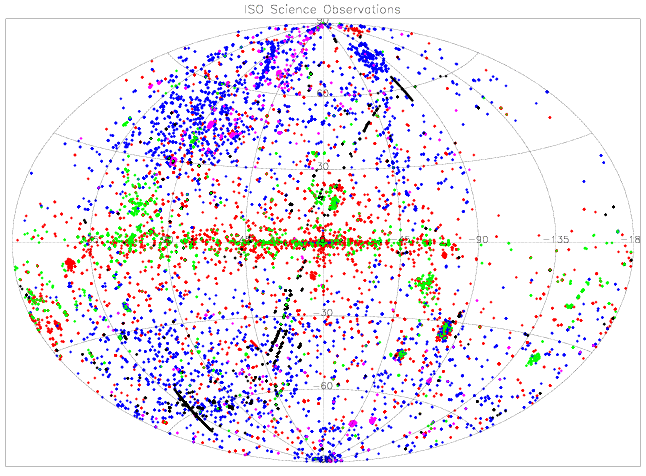Home - ISO
The Infrared Space Observatory (ISO)

The Infrared Space Observatory (ISO) was the world's first true orbiting infrared observatory. Equipped with four highly-sophisticated and versatile scientific instruments, it was launched by Ariane in November 1995 and provided astronomers world-wide with a facility of unprecedented sensitivity and capabilities for a detailed exploration of the Universe at infrared wavelengths.
The two spectrometers (SWS and LWS), a camera (ISOCAM) and an imaging photo-polarimeter (ISOPHOT) jointly covered wavelengths from 2.5 to around 240 microns with spatial resolutions ranging from 1.5 arcseconds (at the shortest wavelengths) to 90 arcseconds (at the longer wavelengths). Its 60 cm diameter telescope was cooled by superfluid liquid helium to temperatures of 2-4 K.
The mission was a great technical, operational and scientific success with most satellite sub-systems operating far better than specifications and with its scientific results impacting practically all fields of astronomy. During its routine operational phase, which lasted until April 1998 - almost a year longer than specified, ISO successfully made some 30,000 individual imaging, photometric, spectroscopic and polarimetric observations ranging from objects in our own solar system right out to the most distant extragalactic sources.
In the ensuing Post Operational Phases, which ended in 2006, the ISO archive has been improved and enhanced both in functionality and in contents, in order to maximise its long-term value and usability, as a legacy to future generations of astronomers.
- Removed a total of (1) style float:left;








































 Sign in
Sign in
 Science & Technology
Science & Technology